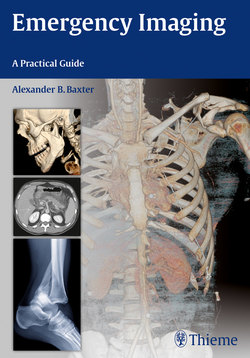Читать книгу Emergency Imaging - Alexander B. Baxter - Страница 83
На сайте Литреса книга снята с продажи.
Оглавление69
2Brain
on CT as a low-attenuation lesion with pe-ripheral enhancement and surrounding vasogenic edema. As acute inflammation resolves, the cyst retracts and appears as an enhancing parenchymal nodule with di-minishing adjacent edema. Over time, the lesion calcifies.
The racemose form of neurocysticer-cosis consists of thin-walled “grapelike” cysts in the subarachnoid, intraventricu-lar, and cisternal CSF spaces. Because the CT attenuation of unruptured cysts corre-sponds to CSF, an intraventricular cyst may be nearly undetectable and a subarachnoid cyst may be indistinguishable from a small arachnoid cyst. MRI imaging with FLAIR sequences readily dierentiates the higher- signal cyst contents from normal CSF. Cysts that obstruct normal CSF flow can cause acute hydrocephalus (Fig. 2.29).
◆Neurocysticercosis
Cysticercosis—systemic infestation by the larval form of the pork tapeworm Taenia so-lium—is endemic to Central America, South America, Asia, and Africa. The incidence in the United States has been steadily rising as a result of immigration and internation-al travel. Infestation can involve almost any tissue, and neurocysticercosis is the leading cause of adult-onset epilepsy worldwide. Obstructive hydrocephalus, meningoen-cephalitis, stroke, headache, and altered mental status are other manifestations.
Clinical and imaging findings depend on the stage of the disease. The encysted larva enjoys immunologic invisibility as long as it is alive, and most patients are as-ymptomatic at this stage. As the larva dies, it elicits an immune reaction that leads to focal cerebritis and seizure. The encysted larva with surrounding cerebritis appears
Fig. 2.29a–fa–d Neurocysticercosis. (a) NCCT. 1-cm right anterior temporal cyst with surrounding vasogenic edema. (b) T2-weighted MRI. High-signal cyst with surrounding vasogenic edema. (c) FLAIR. The cyst is of inter-mediate intensity, indicating complicated uid, and contains a 3-mm hyperintense nodule (larva). Sur-rounding vasogenic edema. (d) T1-weighted MRI + gadolinium. Near-CSF-signal-intensity cyst with thin enhancing rim and surrounding edema.
e,f Neurocysticercosis. (e) NCCT. Right parietal intraparenchymal and left parietal subarachnoid cysts. (f) FLAIR shows an additional intermediate-signal cyst within the left lateral ventricle, not visible on non-enhanced CT.
